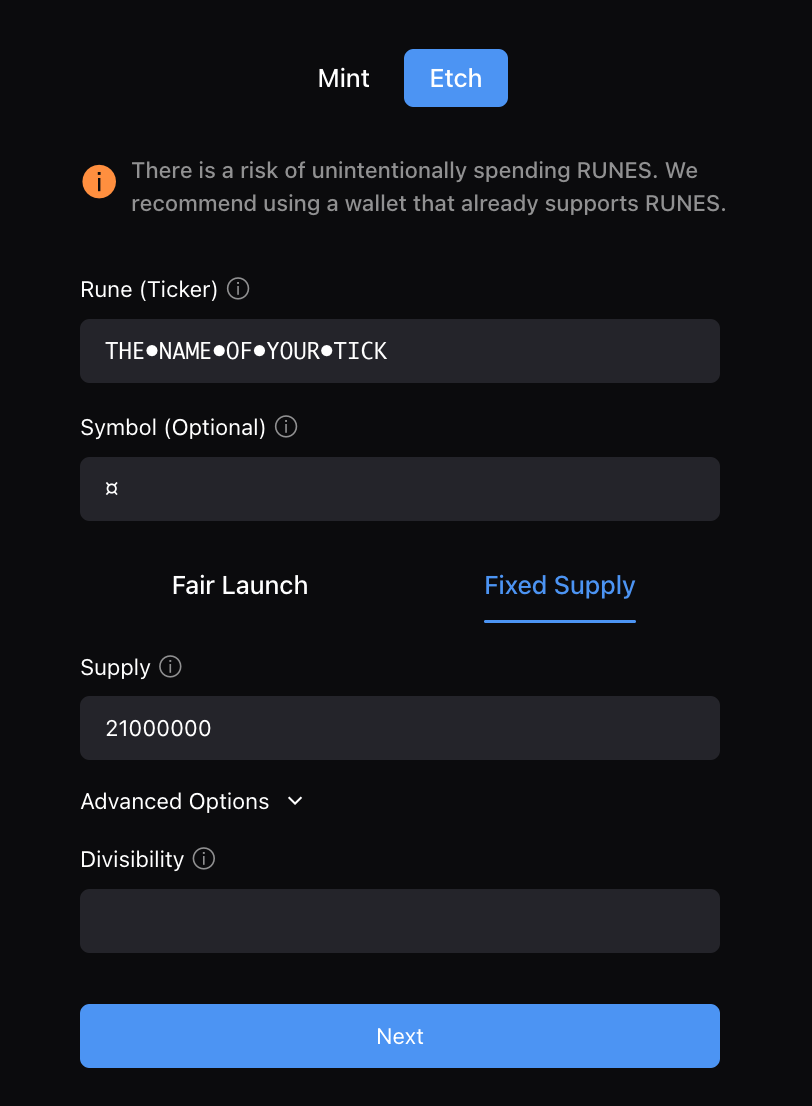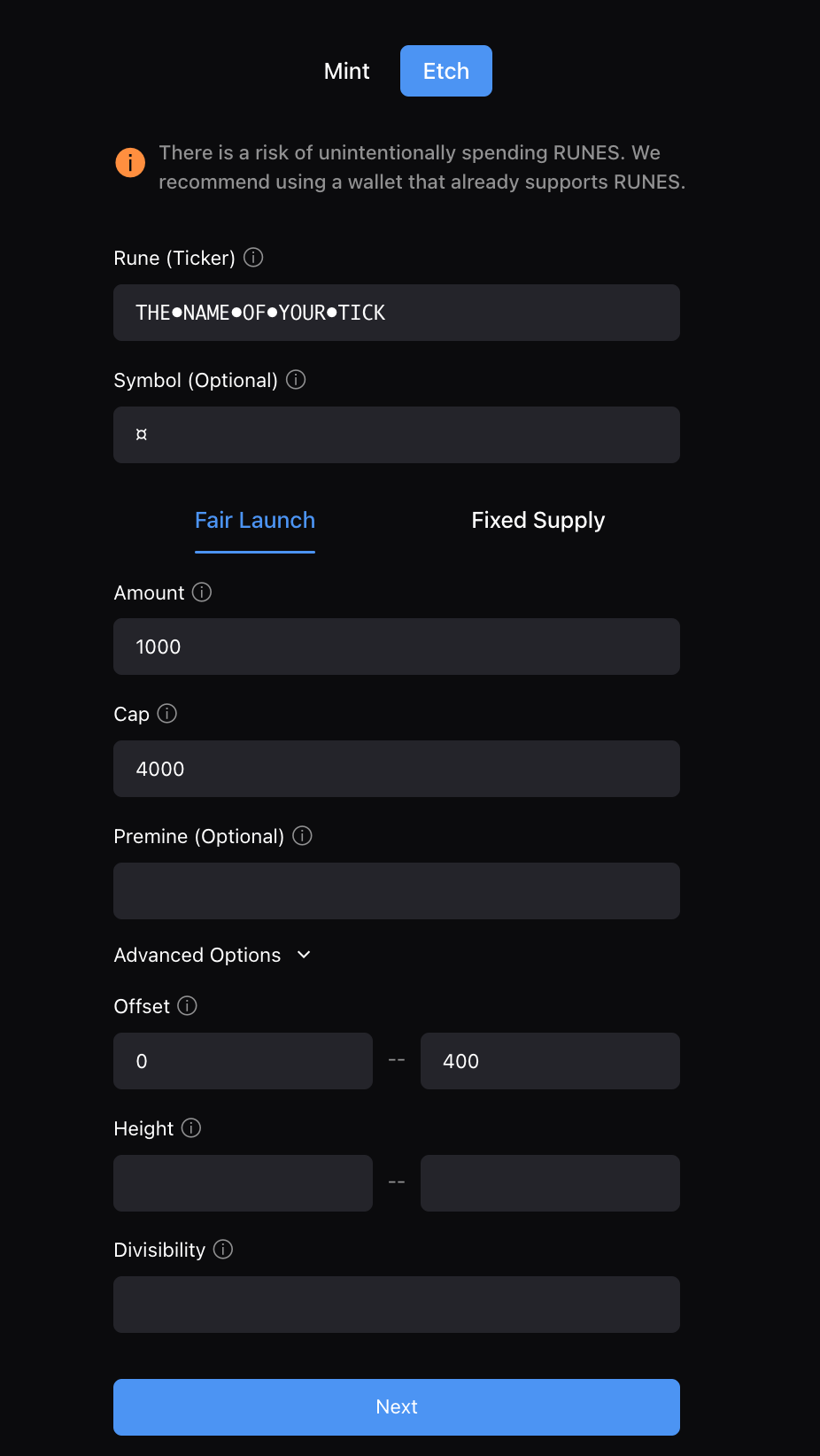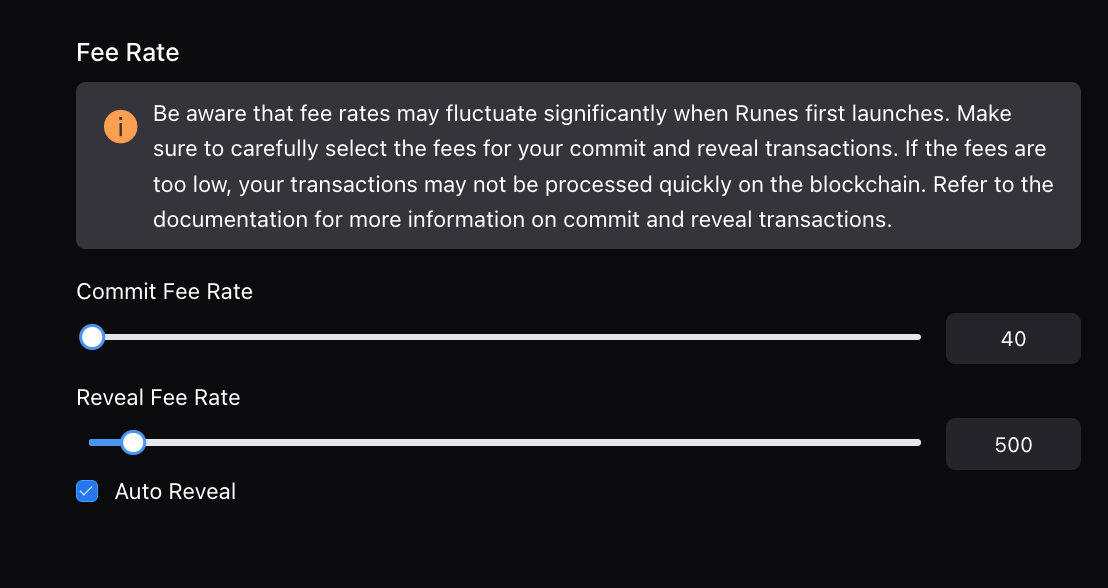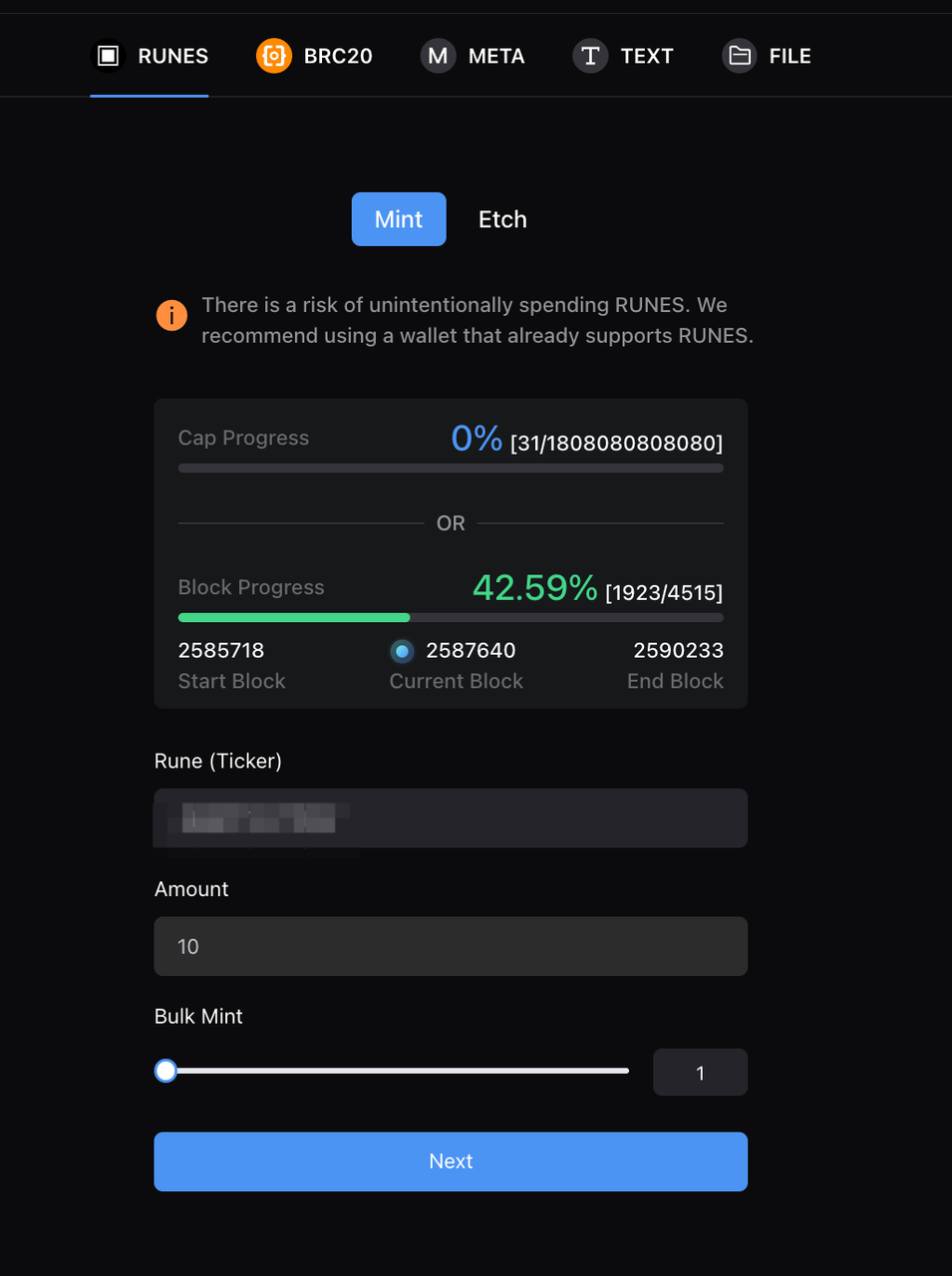Runes
Etching
Etching is the process of creating a new Rune and setting its properties, similar to the deploy operation in brc20.
Parameters
Rune (Ticker): The name you set for the etched Rune. The minimum character count for the Rune name you can deploy varies with block height, and it's recommended to choose a ticker name of at least 13 characters.
Symbol: A rune's currency symbol is a single Unicode code point, for example $, ⧉, or 🧿, displayed after quantities of that rune. If a rune does not have a symbol, the generic currency sign ¤, also called a scarab, should be used.
When etching a Rune on the GeniiData platform, you have the option to select between Fair Launch and Fixed Supply modes.
Fixed Supply
Set the supply and divisibility of the Rune to be deployed. The corresponding Rune tokens will be minted to your wallet address after a successful etching.

Fair Launch
Amount: Each mint transaction generates a fixed amount of new units of a rune, with a maximum limit per mint. (During etching, the 'amount' field represents the precise numerical value, while the displayed amount in the index may differ due to divisibility processing.)
Cap: The number of minting times which minting remains valid after its deployment.
Premine: The etcher of a Rune may optionally allocate to themselves units of the Rune being etched; if no allocation is desired, leave it blank.
Advanced Options:
Divisibility: A Rune's divisibility is how finely it may be divided into its atomic units. Divisibility is expressed as the number of digits permissible after the decimal point in the amount of Rune.
Height: Optional. Specify the valid block height range for Rune minting. If not specified, there is no time limit for minting the Rune token.
Offset: Another parameter to specify the valid minting time for Rune. Instead of specific block heights, offset refers to the number of blocks to wait after the 'etch' transaction confirmation before starting minting, as well as the number of blocks to wait before ending minting.

Commit and Reveal
To prevent front-running, each etching operation is divided into two steps: commit and reveal. Reveal must be submitted 6 blocks after commit transaction confirmation to be considered valid. Separate fee rates can be set for Commit and Reveal.
Note: Once the order is submitted, the reveal fee rate can only be reduced, not increased. Therefore, for every etching order, it's advisable to opt for a higher fee rate to avoid being stuck in mempool due to network fluctuations after the revealing transactions are broadcast .
- When selecting Auto Reveal, the reveal transaction will automatically be submitted after 5 confirmations of the commit transaction. (If the block height has not reached #840000, it will be submitted on or after block #840000).

- Disabling Auto Reveal means the reveal transaction will not be automatically submitted. When you wish to proceed with the reveal operation, locate this transaction in the "orders" page, click "Resume" to broadcast your reveal transaction; If necessary, you have the option to lower your reveal fee rate by making edits to the settings. Note that the fee rate can only be decreased here, not increased.


Even when auto-reveal is enabled, it is still possible to manually pause by clicking the 'pause' button. (This action must be taken before the reveal transaction is broadcasted because once the transaction is broadcasted, it cannot be canceled.)

Mint
To locate the mintable Rune, navigate to the Mint Rank section on the homepage or the Rune list on the Index page. Click on "Mint" and adjust the count for bulk minting. Afterward, submit your mint order. Before submitting the order, remember to check the cap progress and block progress.

Max Mints in Each UTXO
Batch minting of Runes tokens on a single UTXO is valid in the Runes protocol. GeniiData provides the following batch minting options per UTXO: 1/5/10/20, resulting in the consolidation of Runes into a single UTXO. This leads to the following benefits:
Reducing minting costs.
Lowering network fees for both transfers and buyer purchases.
Note: Most platforms don't support partial listings; all balances minted on a UTXO will be listed together. Splitting is required for partial transfers.

Example 1:
Minting 29 UNCOMMON•GOODS and selecting 20 in Max Mints in Each UTXO will result in receiving 2 UTXOs (20+9).
Example 2:
Minting 19 UNCOMMON•GOODS and selecting 5 in Max Mints in Each UTXO will result in receiving 4 UTXOs (5+5+5+4).
Refundable Prepaid Boost Feature
Introducing our advanced feature, the "Refundable Prepaid Boost," designed to optimize your Runes minting transactions with maximum flexibility and efficiency. This feature allows users to prepay an additional fee, which acts as a buffer to accelerate the transaction if needed.
How It Works:
Prepay Additional Fees: When users place a Runes minting order, they can choose to pay an additional fee beyond the standard fee. This extra fee is reserved for potentially increasing the transaction's priority if necessary.
Optional Acceleration: If the minting transaction encounters delays, users can use the prepaid fee to speed up the transaction.
Refund Mechanism: If the minting order is completed without requiring the additional fee boost, the prepaid fee will be automatically refunded to the users.

Benefits:
Flexibility: Users can ensure their transaction is quickly boosted if the network becomes congested.
Cost-Effective: Pay for the boost only if needed; get a refund if not.
Convenience: Instant boosting simplifies acceleration.
Enjoy seamless and efficient Runes minting with our innovative fee management feature.

